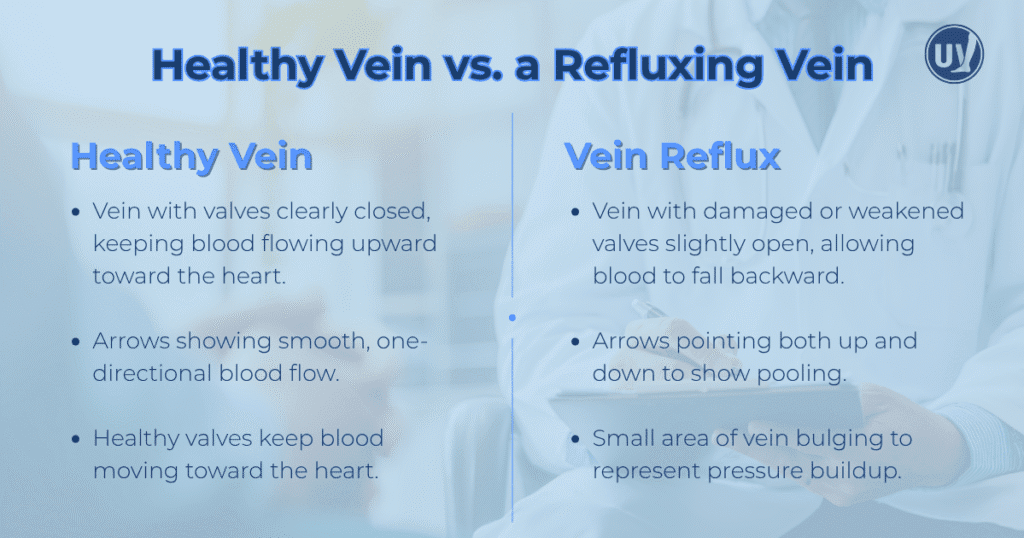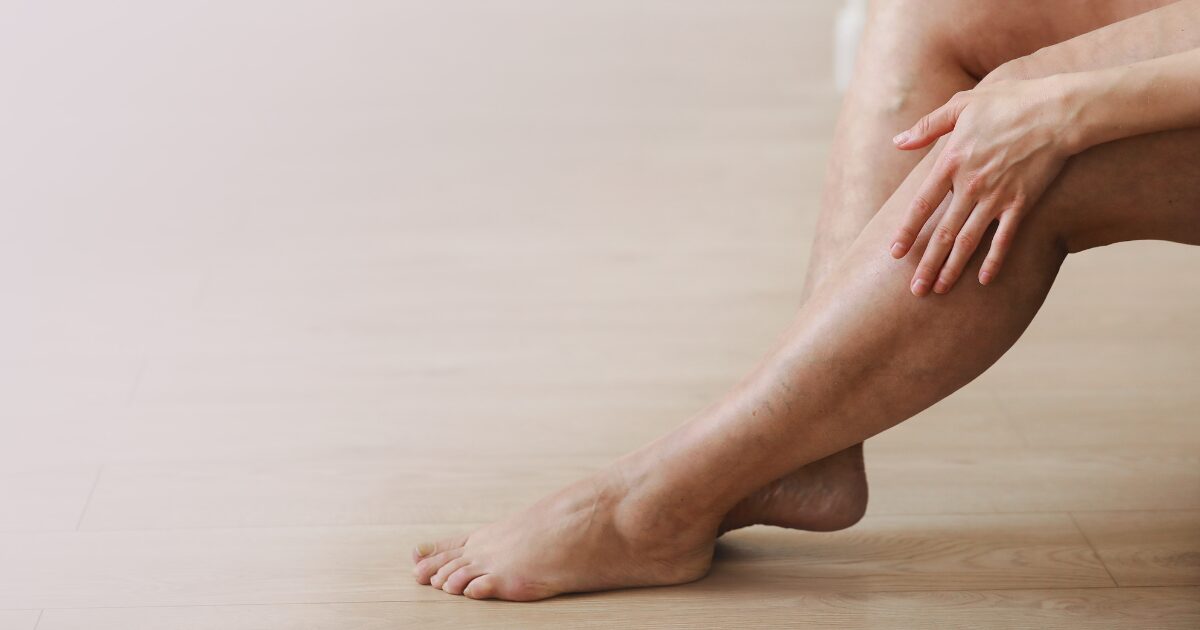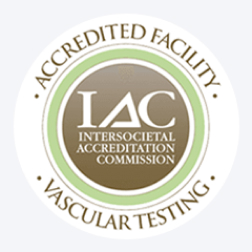Vein reflux and chronic venous disease (CVD) are more common than many people realize, yet they often go undetected until symptoms become severe. A lack of awareness about these conditions can delay diagnosis and treatment, increasing the risk of complications. Understanding vein reflux and CVD is the first step toward maintaining healthy circulation, preventing long-term issues, and improving your quality of life.
What is Vein Reflux?
Vein reflux, also called venous insufficiency, occurs when the veins in your legs are unable to return blood to the heart efficiently. Veins contain valves that ensure blood flows in one direction. When these valves become weak or damaged, blood can pool in the veins. This pooling causes pressure to build, which may lead to swelling, discomfort, and visible changes in your legs over time.
This condition is not just cosmetic. The changes in your veins and skin can indicate underlying circulatory problems that require medical attention. Recognizing the early signs of vein reflux can allow for timely intervention and prevent more serious complications.
Symptoms of Vein Reflux
Symptoms of vein reflux vary in severity and presentation. Common signs include:
- Swelling in the legs or ankles, often worse after standing or sitting for long periods
- A heavy or aching sensation in the legs that intensifies throughout the day
- Varicose veins that appear twisted and bulging beneath the skin
- Skin changes, including discoloration, thickening, or a leathery texture
- Leg ulcers in advanced cases that are slow to heal and require specialized care
Paying attention to these signs and seeking prompt evaluation can help protect your circulation and prevent worsening symptoms.
Understanding Chronic Venous Disease (CVD)
Chronic venous disease is a broader term encompassing vein conditions caused by poor blood flow. Vein reflux is one of the main contributors to CVD, but other factors can also play a role. CVD can significantly impact comfort and mobility, and if left untreated, it can lead to serious complications such as leg ulcers or infections.
CVD often progresses gradually. Early awareness of risk factors and symptoms can help you take proactive steps to preserve vein health and prevent the condition from worsening.
Risk Factors for Vein Reflux and CVD
Several factors increase the likelihood of developing vein reflux and CVD:
- Genetics: Family history can influence the strength of vein walls and valves, making some individuals more susceptible
- Age: Vein function naturally declines over time, increasing the risk of venous insufficiency
- Prolonged Standing or Sitting: Jobs that require long periods of standing or sitting can put pressure on leg veins
- Obesity: Extra weight increases strain on the veins, making blood return more difficult
- Pregnancy: Hormonal changes and increased blood volume can temporarily or permanently affect vein health
Being aware of these risk factors allows you to make lifestyle adjustments and seek medical guidance before symptoms progress.
Diagnosing Vein Reflux and CVD
Early diagnosis is key to preventing complications. A healthcare provider specializing in vascular conditions will usually start with a detailed medical history and physical exam. An ultrasound is often recommended to visualize blood flow, identify reflux or blockages, and assess the severity of vein insufficiency.
Additional tests, such as venography or advanced imaging, may be needed in complex cases. Accurate diagnosis is crucial to developing a treatment plan that addresses both symptoms and underlying causes.

Treatment Options for Vein Reflux and CVD
Treatment for vein reflux and chronic venous disease depends on the severity of your condition, your overall health, and your personal preferences. Options range from lifestyle modifications to minimally invasive procedures and surgery.
Procedury minimalnie inwazyjne
For more significant vein issues, procedures such as sclerotherapy or endovenous ablation may be recommended:
- Sclerotherapy: A solution is injected into small varicose or spider veins, causing them to collapse and fade over time
- Endovenous ablation: Uses laser or radiofrequency energy to close off larger problematic veins with minimal downtime
These procedures are highly effective, offer quick recovery, and improve both symptoms and cosmetic appearance.
Opcje chirurgiczne
In severe cases, surgical interventions like vein stripping or phlebectomy may be necessary. These procedures remove or tie off affected veins to restore proper circulation. Surgery is typically reserved for cases where conservative and minimally invasive treatments are insufficient.
Dlaczego wczesne wykrywanie ma znaczenie
Early recognition of vein reflux and CVD allows for less invasive treatment, faster relief of symptoms, and better long-term outcomes. Understanding the science behind these conditions can motivate you to seek evaluation before issues worsen. With the right guidance and interventions, it is possible to manage symptoms effectively and maintain an active lifestyle.
Your Partner in Vascular Health: United Vein & Vascular Centers
At United Vein & Vascular Centers, we specialize in diagnosing and treating vein reflux and chronic venous disease. Our team of experienced vascular specialists provides personalized care tailored to your needs. From lifestyle guidance to advanced minimally invasive procedures, we are committed to helping you achieve optimal vein health.
Take the first step today. Schedule a consultation with UVVC and start your journey toward healthier veins and improved quality of life.
Często zadawane pytania
Common signs include leg swelling, aching, heaviness, varicose veins, and skin changes. A vascular specialist can perform an ultrasound to confirm the diagnosis.
Most treatments, especially minimally invasive options like sclerotherapy or endovenous ablation, are well-tolerated. Discomfort is usually mild and temporary, with a short recovery period.
Yes. Regular exercise, weight management, leg elevation, and avoiding prolonged sitting or standing can help improve circulation, reduce symptoms, and slow disease progression.


